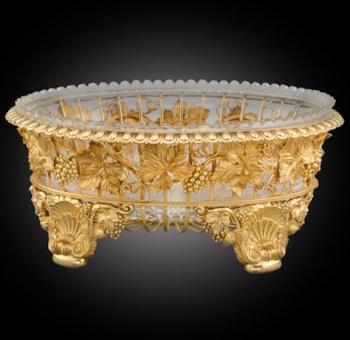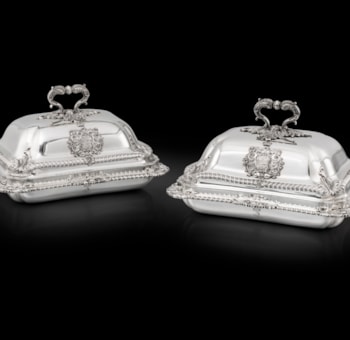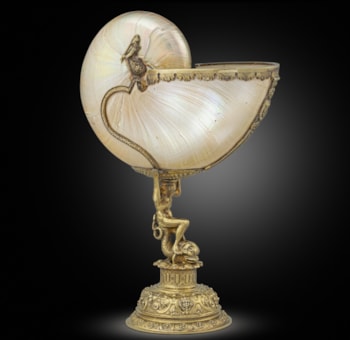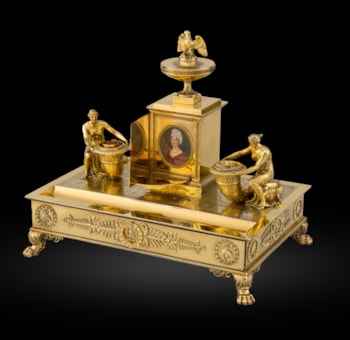Charles Christofle
( 1805 - 1863 )
Charles Christofle is born in Paris on October 25, 1805 and died in Brunoy (Essonne) on 13th December 1863. He had begun his career by following the tradition at the age of fifteen of becoming an apprentice to his brother-in-law jeweller, Hugues Calmette, in 1820 By 1830, he is free and starts the accounts for the business. In 1832 his hallmark is entered at the Paris Assay Office, where he is recorded as manufacturer of gold jewellery In 1839, he is already one of the biggest French jewellers and employs 50 people . Already his jewellery is exported as far as South America. It is in 1842, that he began to exploit for France, the patents of the famous English firm Elkington. This concerns the process of gilding and silvering by electrolysis. He then, in 1845 starts the company "Charles Christofle & Cie" and begins to manufacture himself, from 1846 onwards, pieces to silver-plate, thus becoming independent of other manufacturing silversmiths. This was the start of his major success. His hallmarks of master-craftsman are entered in 1845, the date of the first manufacturing of silver plate production The improvement of the processes for gilding and silvering by Christofle allowed him to not only produce in series silver objects but also to engage with great success in the production of monumental decorative pieces. To name a few, the decorating the carriage of the train to Pope Pius IX, (1858) , or the monumental statues on the roof of the Paris Opera, (1868) or the church of Our Lady of the Guard in Marseilles, (1869) , the largest electroplating in the world The successor to King Louis -Philippe I , the Emperor Napoleon III ordered in 1851 , all official Empire tableware from Christofle . His titles " Goldsmith to the King " and " Supplier of the Emperor" allowed the firm to became famous with foreign rulers like the Emperor of Mexico or the Czar of Russia . Charles Christofle successfully conquered foreign markets : the Kaiser's Germany , the Austro-Hungarian Empire and the Ottoman Empire. In 1863, after the death of Charles Christofle, the firm continued with his son and his nephew Paul Christofle Bouilhet Henri, ( 1830-1910 ) Paul was a chemist and also a talented artist who introduced electroplating for metal forming using rubber molds from the process of Russian Moritz von Jacobi . By the second half of the nineteenth century , Christofle also became the supplier of ministries, embassies, parliaments around the world , but also to the luxury hotels , maritime and railway companies, both French and foreign . At the end of the nineteenth century one finds Christofle producing silver plated objects . The name "Christofle " even becomes a generic name for the silver. Today, the brand that perpetuates its prestigious orders is also supplier of the Elysée Palace in Paris .


































































